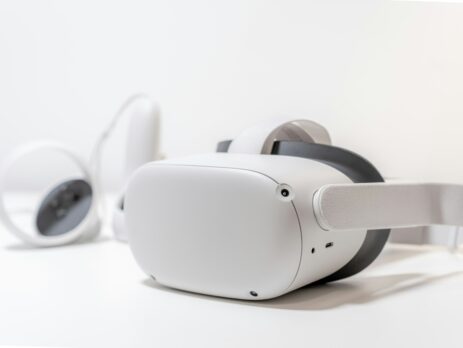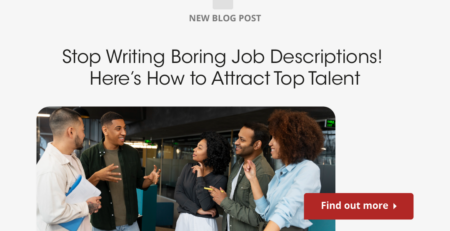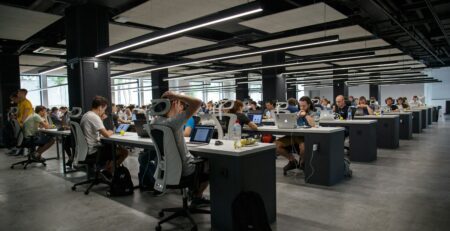Crafting Virtual Experiences: Recruiting VR Designers
The realm of virtual reality (VR) has expanded beyond just gaming into various sectors including education, training, real estate, and healthcare. This surge in VR applications has created a significant demand for skilled VR designers who can craft immersive and effective virtual experiences. Recruiting the right talent is crucial for the success of VR projects, as the designer’s role is pivotal in creating engaging and realistic environments that meet the specific needs of the industry.
VR designers are not just artists or programmers; they are a blend of both, with a deep understanding of human psychology and user experience. They need to possess a unique set of skills that include 3D modeling, computer graphics, user interface design, and user experience design. Moreover, they must be adept at using various VR tools and platforms that bring these virtual experiences to life.
Given the complexity and the interdisciplinary nature of VR design, finding the right candidates can be challenging. Companies must look for individuals who are not only technically proficient but also creative and innovative. They should have the ability to think out of the box and visualize the end product from the initial stages of development.
Recruitment strategies for VR designers must therefore be carefully crafted. Employers need to focus on attracting talent from diverse backgrounds to foster creativity and innovation. Job descriptions should clearly outline the technical skills and creative abilities required, and the recruitment process should include tasks that allow candidates to demonstrate their design thinking and problem-solving skills.
Networking plays a crucial role in recruiting VR designers. Participating in industry conferences, workshops, and seminars can help employers connect with potential candidates. Additionally, showcasing company projects and achievements in VR at these events can attract top talent who are looking for exciting opportunities and challenges.
Another effective strategy is to collaborate with educational institutions that offer specialized courses in VR design. Internships and cooperative education programs can serve as a pipeline for fresh talent, giving students real-world experience and companies access to the newest skills in the market.
With the competition for skilled VR designers heating up, companies must also focus on retention strategies. Providing continuous learning opportunities, competitive salaries, and a creative work environment can help keep top talent. Recognizing and rewarding innovation and creativity in VR projects can also boost morale and encourage a culture of excellence.
As the VR industry continues to evolve, staying updated with the latest trends and technologies is essential for both recruiters and designers. Resources like top AR/VR design tools and resources can be invaluable for keeping up with the advancements in the field.
In conclusion, recruiting the right VR designer is about finding a balance between technical expertise and creative vision. It requires a strategic approach to recruitment and a commitment to nurturing talent. With the right team, companies can create virtual experiences that are not only technologically advanced but also engaging and impactful.
Most Asked Questions About Crafting Virtual Experiences: Recruiting VR Designers
- What are the essential skills and qualifications for a VR designer?
- How can companies effectively assess the technical skills of VR designer candidates?
- What are the best platforms and tools for VR designers in 2023?
- How can companies attract top VR design talent?
- What are the challenges in recruiting VR designers and how can they be overcome?
- How important is industry experience for a VR designer?
- What are the trends in VR design that recruiters should be aware of?
Essential Skills and Qualifications for a VR Designer
VR designers are at the forefront of creating immersive experiences that can transport users to different worlds. The essential skills for a VR designer include a strong foundation in 3D modeling, animation, and graphic design. Proficiency in VR software like Unity or Unreal Engine is crucial for building interactive environments. Additionally, a good grasp of user experience (UX) design principles is necessary to ensure that the virtual environments are user-friendly and engaging.
Qualifications for VR designers typically include a degree in computer science, graphic design, or a related field. However, due to the interdisciplinary nature of VR, individuals with backgrounds in psychology, fine arts, or even storytelling can also excel in this field, provided they have the necessary technical training.
Hands-on experience is highly valued in the VR industry. Portfolios that showcase a candidate’s ability to design and implement VR projects are often a key deciding factor in the hiring process. These portfolios should demonstrate not only technical skills but also creative problem-solving and an ability to work collaboratively on complex projects.
Soft skills such as communication, teamwork, and adaptability are also important. VR projects often require collaboration across different departments and specialties, making the ability to communicate effectively and work within a team crucial.
Continuing education and professional development are important as well, as the field of VR is rapidly evolving. Participation in workshops, online courses, and certification programs can help VR designers stay current with the latest technologies and design trends.
For those looking to break into the field, internships and entry-level positions in companies that specialize in VR can provide valuable experience. These opportunities allow aspiring VR designers to work alongside experienced professionals and gain insights into the practical aspects of VR design and development.
Ultimately, the combination of technical skills, creative ability, and a passion for innovation is what makes a successful VR designer. Employers looking to hire VR designers should focus on these qualities and consider candidates who demonstrate a strong potential for growth and a commitment to staying at the forefront of VR technology.
Assessing Technical Skills of VR Designer Candidates
When recruiting VR designers, assessing technical skills is a critical component of the hiring process. Companies need to ensure that candidates not only have the right qualifications but also the practical skills to effectively contribute to VR projects. One effective method is to conduct technical interviews that include practical tasks or problem-solving scenarios related to VR.
These interviews might involve live coding sessions or detailed discussions about past projects and the specific technologies used. It’s also beneficial to ask candidates to critique a VR experience or propose improvements to an existing project, providing insights into their analytical and creative thinking.
Another approach is to provide a take-home assignment that simulates a real-world VR design challenge. This can help assess a candidate’s ability to handle project-based work and deliver results within a set timeframe. The assignments should be carefully designed to cover a range of skills, from 3D modeling and animation to UX design and scripting.
Portfolio reviews are another essential part of the technical assessment. A well-prepared portfolio should not only display the candidate’s best work but also highlight their role in each project and the specific challenges they overcame. This can give recruiters a better understanding of the candidate’s skill level and their ability to drive a project from concept to completion.
It’s also important to consider the candidate’s experience with industry-standard VR tools and platforms. Familiarity with tools like Unity, Unreal Engine, or other relevant software is crucial for a VR designer. During the interview, discussing how they’ve used these tools in past projects can provide deeper insights into their expertise and adaptability.
Collaboration is key in VR projects, so assessing a candidate’s ability to work in a team is also important. This can be evaluated through references or during the interview process by asking about their experiences working with cross-functional teams.
Finally, staying updated with the latest VR trends and technologies is important for any VR designer. Candidates who demonstrate a commitment to continuous learning and professional development are likely to be valuable assets to any team. This can be assessed by discussing recent advancements in VR that the candidate finds exciting or relevant to their work.
Best Platforms and Tools for VR Designers in 2023
The VR landscape is continuously evolving, with new tools and platforms emerging that enhance the capabilities of VR designers. In 2023, some of the leading tools that VR designers are using include Unity, Unreal Engine, and Autodesk Maya. These platforms are renowned for their robust features that allow for creating detailed and immersive VR experiences.
Unity is particularly popular among VR designers for its user-friendly interface and extensive asset store. It supports both 2D and 3D game development and is versatile enough to be used for a wide range of applications, from interactive simulations to training modules.
Unreal Engine is known for its powerful rendering capabilities, making it ideal for creating high-quality visual content. Its Blueprint system allows designers to create complex interactions without extensive coding knowledge, which can significantly speed up the development process.
Autodesk Maya is another essential tool for VR designers, especially those who specialize in 3D modeling and animation. It offers a comprehensive set of features for modeling, texturing, and animating, which are crucial for building detailed VR environments.
Adobe Substance 3D Painter is also gaining traction in the VR design community. It allows designers to create detailed textures and materials that can add realism to VR environments. Its intuitive layer-based painting system makes it easy to create complex materials.
For user experience design, tools like Sketch and Figma offer capabilities that help in designing intuitive user interfaces for VR applications. These tools allow for rapid prototyping and collaborative design, which can be incredibly beneficial in a fast-paced development environment.
Aside from software tools, VR hardware such as Oculus Rift, HTC Vive, and Valve Index also play a crucial role in the design process. These devices provide the necessary hardware platform to test and refine VR experiences, ensuring they are immersive and perform well across different systems.
It’s also important for VR designers to be familiar with motion capture technology and photogrammetry as these technologies are increasingly being used to create realistic animations and environments in VR.
Staying informed about new tools and technologies is crucial for VR designers. Resources like blogs, online forums, and industry conferences can provide valuable insights and help designers stay ahead of the curve.
Ultimately, the choice of tools and platforms depends on the specific needs of the project and the skills of the VR designer. However, a combination of powerful software and cutting-edge hardware is essential for creating engaging and effective VR experiences.

Attracting Top VR Design Talent
Attracting top VR design talent requires a combination of strategic positioning and appealing to the specific needs and aspirations of creative professionals. Companies must differentiate themselves by highlighting exciting projects, cutting-edge technology, and a culture that values innovation and creativity.
One effective strategy is to showcase innovative VR projects at industry events and conferences. This not only demonstrates the company’s commitment to pioneering in the VR space but also puts them directly in front of passionate VR professionals who are looking for their next opportunity.
Offering competitive compensation packages is also crucial. This includes not only salaries but also benefits like health insurance, retirement plans, and opportunities for professional development. For more insights on ensuring competitive compensation, refer to How to Know if Your Salary is Competitive.
Creating a work environment that fosters creativity and innovation is another key factor. This includes providing access to the latest VR tools and technologies, encouraging ongoing learning and experimentation, and supporting a healthy work-life balance.
Engaging with the academic community can also be a fruitful strategy. Partnering with universities and design schools can help tap into emerging talent early and tailor internship programs that prepare students for real-world VR design challenges.
Utilizing specialized staffing agencies that focus on technology and creative roles can streamline the recruitment process and ensure access to a wider pool of qualified candidates. For more information on using staffing agencies, see Using a Staffing Agency.
Online platforms and social media also play a crucial role in attracting VR talent. Regularly updating company pages with news, projects, and behind-the-scenes content can engage potential candidates and give them a sense of the company culture and the innovative work being done.
It’s also important to be clear about the career paths available within the company for VR designers. Providing clear trajectories for advancement and leadership opportunities can attract professionals who are looking for growth and development in their careers.
Finally, fostering a diverse and inclusive work environment can not only broaden the pool of talent but also enhance creativity and innovation within the team. Emphasizing diversity in job postings and the recruitment process can attract a wider range of candidates with varied experiences and perspectives.
Challenges in Recruiting VR Designers and Solutions
Recruiting VR designers presents several challenges, primarily due to the high demand and limited supply of qualified candidates. The rapid pace of technological advancements in VR also means that the required skill sets are constantly evolving, making it difficult for recruiters to find candidates who are up-to-date with the latest tools and techniques.
One of the main challenges is the competition from other tech-heavy industries vying for the same talent pool. To address this, companies need to build a strong employer brand that highlights their unique offerings and commitment to innovation in the VR space.
Another challenge is the need for a diverse skill set. VR designers must have a combination of artistic and technical skills, along with an understanding of user experience and human-centered design. Creating detailed job descriptions and using targeted recruitment strategies can help attract candidates with the right mix of skills.
The geographical distribution of talent can also pose a challenge, especially for companies located in areas with a limited tech workforce. Offering remote work options can widen the talent pool and attract candidates from different regions. For tips on managing a remote workforce, see Tips for Managing a Remote Workforce.
Assessing the technical skills and creative abilities of candidates can be difficult through traditional interviewing techniques. Implementing practical assessments and project-based tasks during the recruitment process can provide better insights into a candidate’s capabilities.
Lack of awareness or misconceptions about the VR industry can also deter potential candidates. Educational initiatives that promote the benefits and potentials of a career in VR design can help in attracting more candidates.
Finally, retaining top VR talent can be as challenging as recruiting them. Companies need to focus on creating an engaging work environment that offers continuous learning opportunities, competitive compensation, and recognition of creative contributions.
Importance of Industry Experience for VR Designers
While technical skills and creativity are crucial for VR designers, industry experience can play a significant role in their ability to contribute effectively to projects. Experience in a specific industry can provide designers with insights into the particular needs and challenges of that sector, which can be invaluable in creating targeted and effective VR solutions.
For instance, a VR designer with experience in the healthcare industry would be familiar with the regulatory and compliance requirements that are critical to developing VR applications for medical training or patient care. This knowledge can streamline the development process and ensure that the final product meets industry standards.
Similarly, experience in the gaming industry can be beneficial for VR designers working on interactive VR experiences that require high levels of user engagement and sophisticated graphics. These designers often bring a deep understanding of user behavior and game mechanics, which can enhance the immersive quality of VR applications.
However, it’s also important to recognize the value of cross-industry experience. Designers who have worked in different sectors may bring fresh perspectives and innovative approaches to VR projects. This can be particularly valuable in an emerging field like VR, where traditional solutions may not always be effective.
Recruiters should consider both industry-specific experience and the broader skills and creativity of candidates. A balanced approach can help in building a diverse team that can tackle a wide range of VR projects.
For companies looking to recruit VR designers with specific industry experience, networking at industry-specific events and participating in professional groups can be effective strategies. Additionally, job postings that clearly articulate the industry-specific skills and experiences desired can attract candidates with the relevant background.
Ultimately, while industry experience can greatly enhance a VR designer’s contributions, it should not be the sole criterion for recruitment. A combination of technical skills, creative ability, and a willingness to learn and adapt is also critical for success in this rapidly evolving field.
Trends in VR Design for Recruiters
Staying informed about the latest trends in VR design is crucial for recruiters looking to hire top talent in this field. One of the key trends is the increasing use of AI and machine learning in VR applications, which is enhancing the interactivity and personalization of virtual experiences.
Another significant trend is the expansion of VR beyond gaming into sectors like education, training, and healthcare. This diversification is creating new opportunities for VR designers and requires a broader understanding of different user needs and applications.
The integration of VR with other technologies such as augmented reality (AR) and mixed reality (MR) is also on the rise. This convergence is leading to the creation of more complex and immersive experiences, known as extended reality (XR), which blends the real and virtual worlds.
Social VR is another emerging trend, where users can interact with each other within a virtual environment. This is particularly relevant in the context of remote work and virtual meetings, where VR can provide a more engaging and interactive way to connect with colleagues and clients.
Sustainability is also becoming a key consideration in VR design. As the environmental impact of technology gains more attention, VR designers are being challenged to create energy-efficient applications and consider the lifecycle of VR products.
For recruiters, understanding these trends can help in identifying candidates who are not only skilled in current VR technologies but are also prepared for future developments. It can also inform the development of training and professional development programs that keep existing staff updated with the latest advancements.
Engaging with VR communities and forums, attending industry conferences, and participating in webinars can help recruiters stay informed about the latest trends and innovations in VR design. Additionally, subscribing to relevant publications and following thought leaders in the VR space can provide deeper insights into the evolving market dynamics and technological advancements.
Recruiters should also be proactive in discussing these trends during interviews to gauge candidates’ awareness and enthusiasm for the future of VR. Questions about emerging technologies and their potential applications in VR can reveal a candidate’s forward-thinking mindset and readiness to adapt to new challenges.
Furthermore, developing partnerships with technology providers and academic institutions can help recruiters stay ahead of the curve. These partnerships can provide access to cutting-edge research and technology, as well as opportunities to collaborate on projects that push the boundaries of what is currently possible in VR.
In conclusion, understanding and leveraging the latest trends in VR design are essential for recruiters aiming to attract and retain top talent in this rapidly evolving field. By staying informed and engaged with the VR community, recruiters can not only improve their hiring strategies but also contribute to the growth and success of their organizations in the virtual realm.
Conclusion
Recruiting VR designers is a multifaceted challenge that requires a deep understanding of the technology, the market, and the unique skills required to create compelling virtual experiences. As VR continues to permeate various sectors, the demand for skilled designers is growing, making it crucial for recruiters to refine their strategies for attracting and retaining top talent.
From understanding the essential skills and qualifications to navigating the complexities of assessing technical abilities and industry experience, recruiters must be well-equipped to identify candidates who not only meet the current needs but are also capable of driving innovation in the future.
The trends in VR design indicate a promising future, with advancements in technology and expanding applications across industries. Recruiters must stay informed about these trends and adapt their approaches accordingly to ensure they are attracting candidates who are not only technically proficient but also visionary in their work.
Moreover, the challenges in recruiting VR designers, such as the competitive market and the rapid pace of technological change, require recruiters to be proactive and creative in their recruitment strategies. This includes leveraging industry networks, engaging with educational institutions, and fostering a workplace culture that values continuous learning and innovation.
Ultimately, the success of VR projects heavily relies on the creativity, technical expertise, and strategic vision of the designers. Therefore, investing in robust recruitment and retention strategies is essential for companies looking to lead in the creation of immersive and impactful virtual experiences. By focusing on building a strong team of VR designers, companies can not only enhance their project outcomes but also contribute to the advancement of the VR industry as a whole.
In today’s competitive market, finding the right creative and marketing expert can be a challenge. But with icreatives, you’re in experienced hands. With 37 years in staffing and a track record of matching more than 10,000 employees to over 1,000 companies worldwide, we know how to connect you with the best. Plus, you only pay if you hire—there’s no risk, only results.
Ready to find your perfect creative or marketing expert? HIRE WITH ICREATIVES today!












